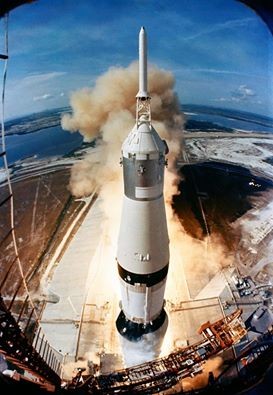The source code for the flight software of NASA's Apollo 11 space mission was been published on storage hosting service GitHub and is full of inside jokes and 1960s pop culture. Computer programmers at the Massachusetts Institute of Technology (MIT) started developing the new software in the mid-1960s, before the 1969 manned lunar mission that included Neil Armstrong and Edwin "Buzz" Aldrin. The MIT computer code posted earlier by Google was critical in helping the United States beat the Soviet Union to the moon.
MIT researchers at its Instrumentation Laboratory had to invent new technology for the Saturn V rocket's trip. They created a new method for storing computer programs named "rope memory."
The researchers also developed a special version of the Assembly programming language. It was designed to be easily understood by machines. The computer scientists wrote thousands of lines of code for the Apollo Guidance Computer (AGC).
In 2003 the AGC code was first uploaded to the web by tech researcher Ron Burkey, according to Quartz. He had transcribed each line of code by manually typing it from a scanned copy made by a Colorado airplane pilot.
MIT posted the scanned code online. However, Burkey had to use his engineering skills to re-construct some undecipherable parts that were hard to read.
Many software developers did not know about the Apollo source code. That changed on July 7, Thursday when former NASA intern Chris Garry uploaded a complete version to code-sharing site GitHub.
Programmers then started to look at the plain-language code comments made by the AGC programmers. Many of them were light-hearted jokes and included several references to the 1960s decade.
For example, one source code file is named "Burn Baby Burn." It refers to the 1965 Los Angeles riots and the catch phrase of a famous disk jockey named Magnificent Montague.
The subroutine also includes a block of code with some light comments from the programmers. It starts with "# HELLO THERE" and ends with "# GOODBYE. COME AGAIN SOON."
Meanwhile, the same file also includes a fun instruction to an astronaut. It asks him to "crank the silly thing around."
MIT's software code even includes some lines from Shakespeare's "Henry VI." Reddit users have guessed that it refers to the two-digit numbers input as AGC code, which included a "noun" and "verb," according to Smithsonian.
The original AGC only had 3840 bytes yet weighed about 70 pounds.
Here's the Apollo 11 lunar landing:



























